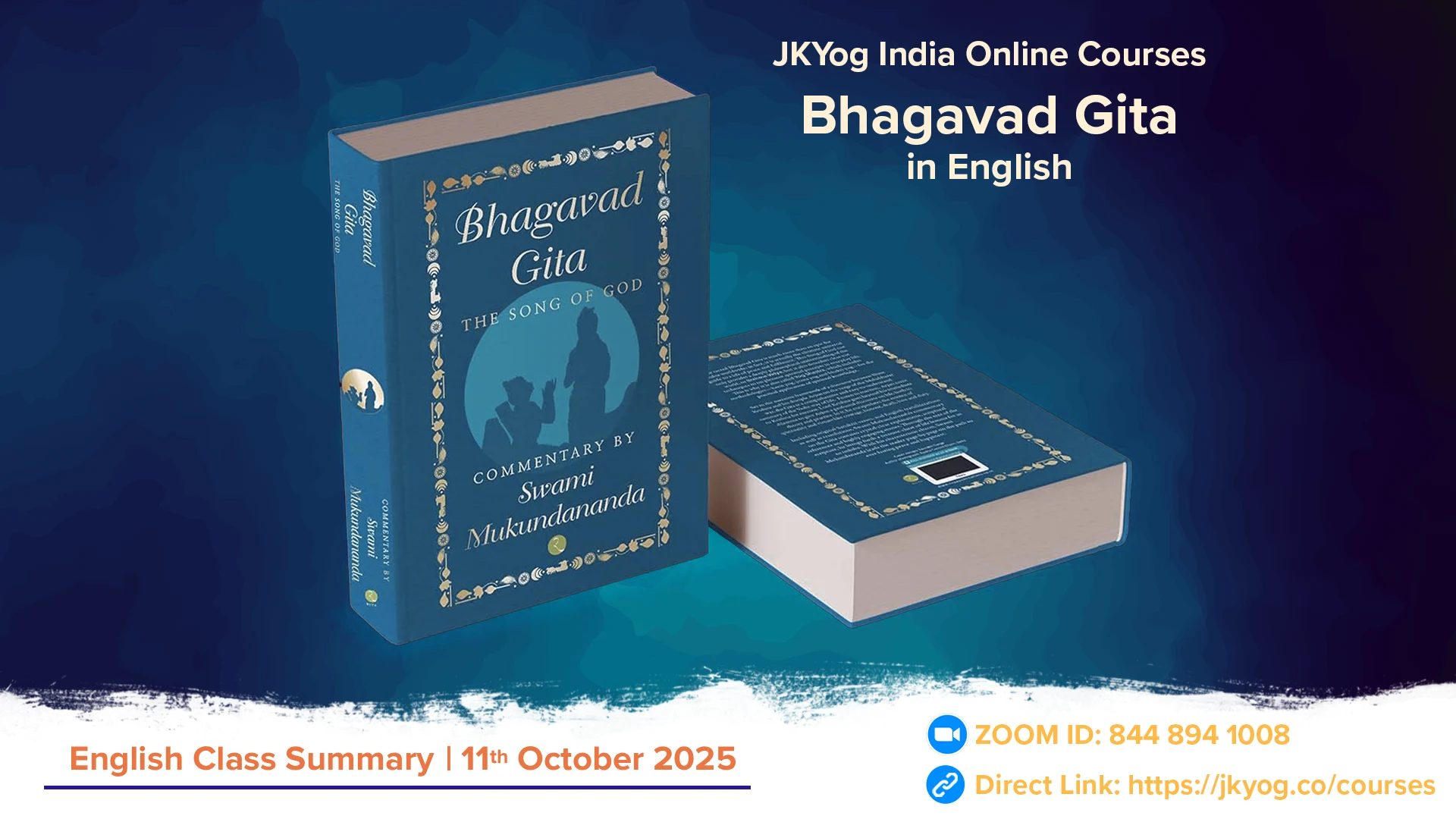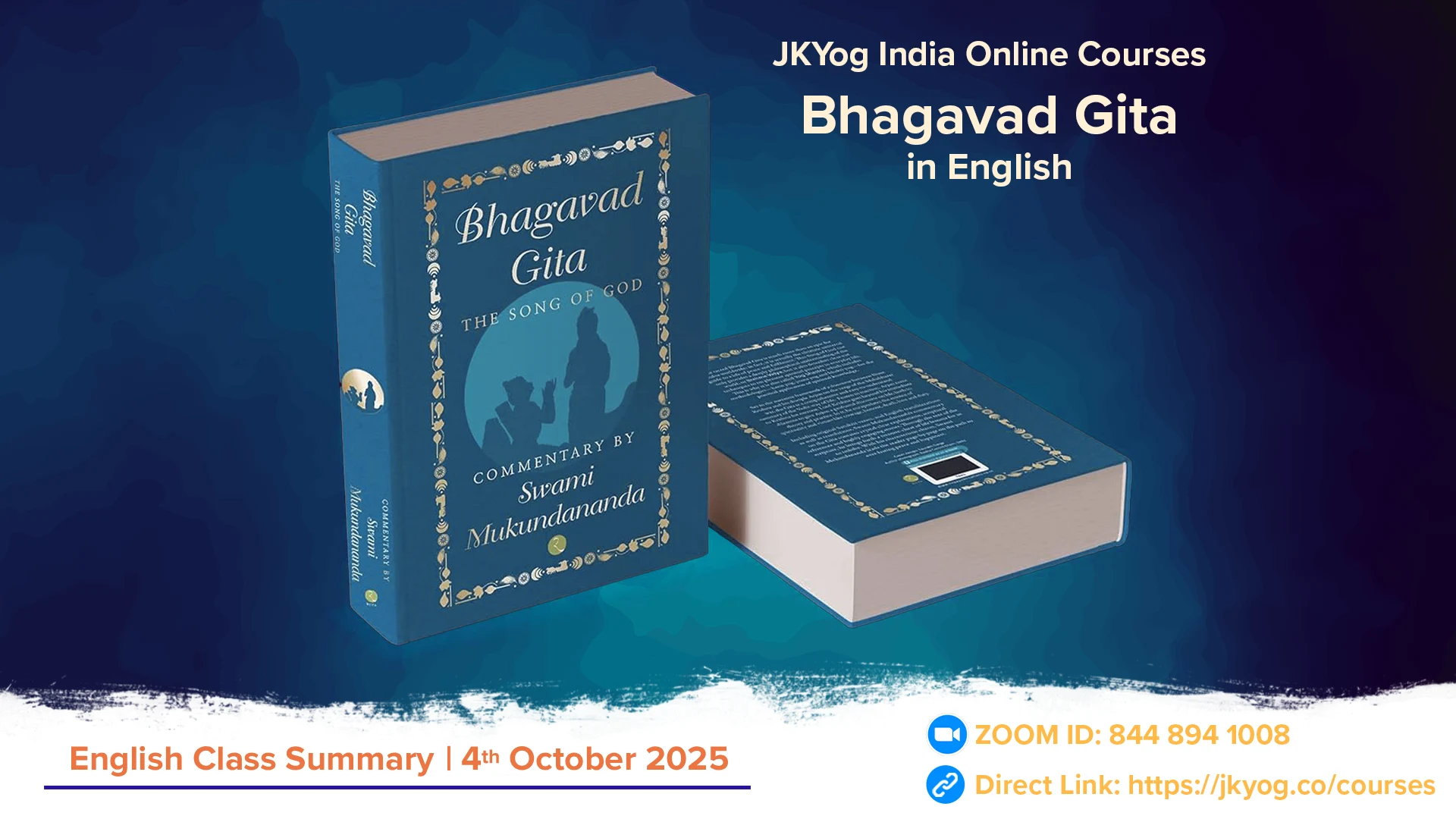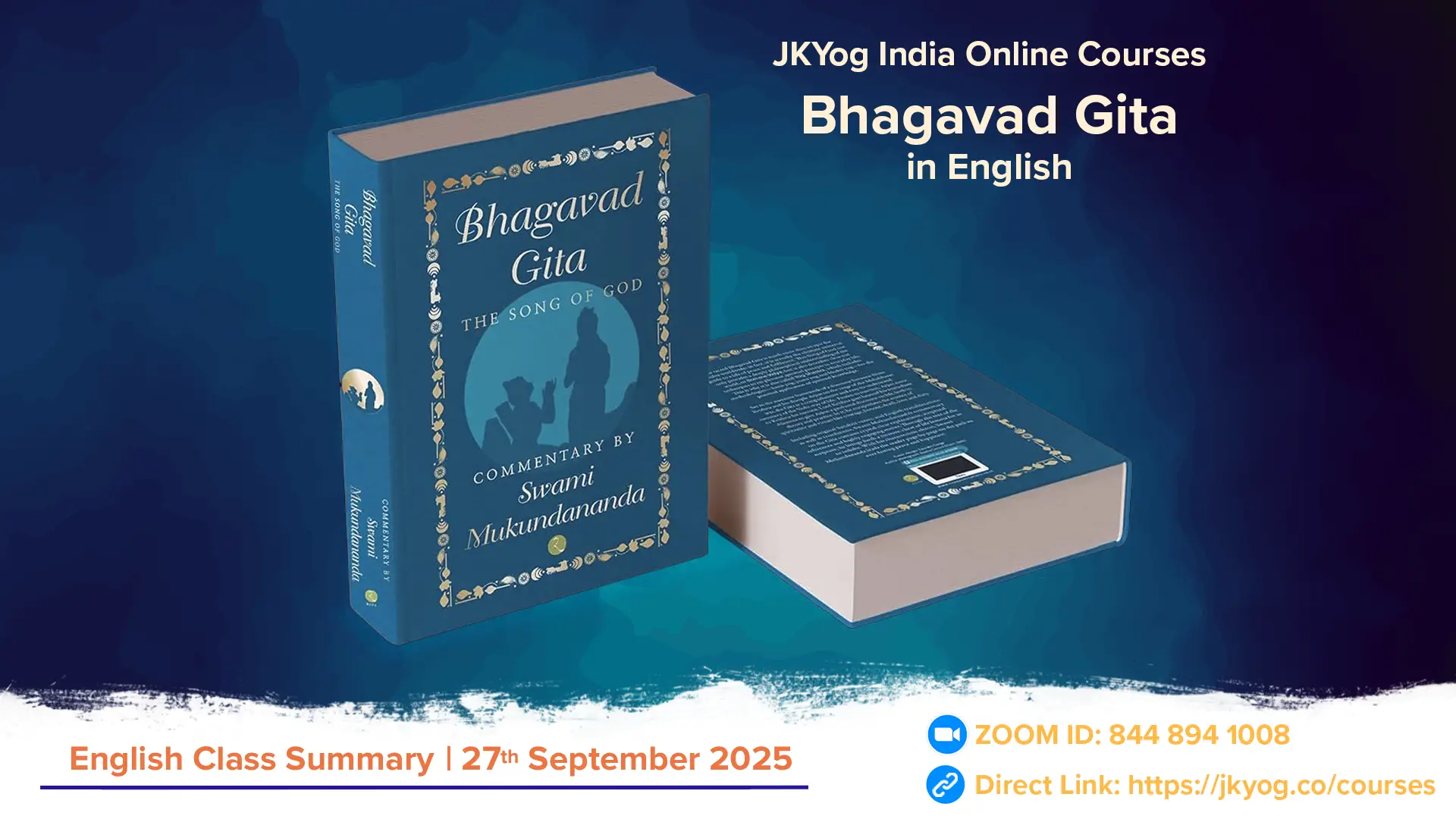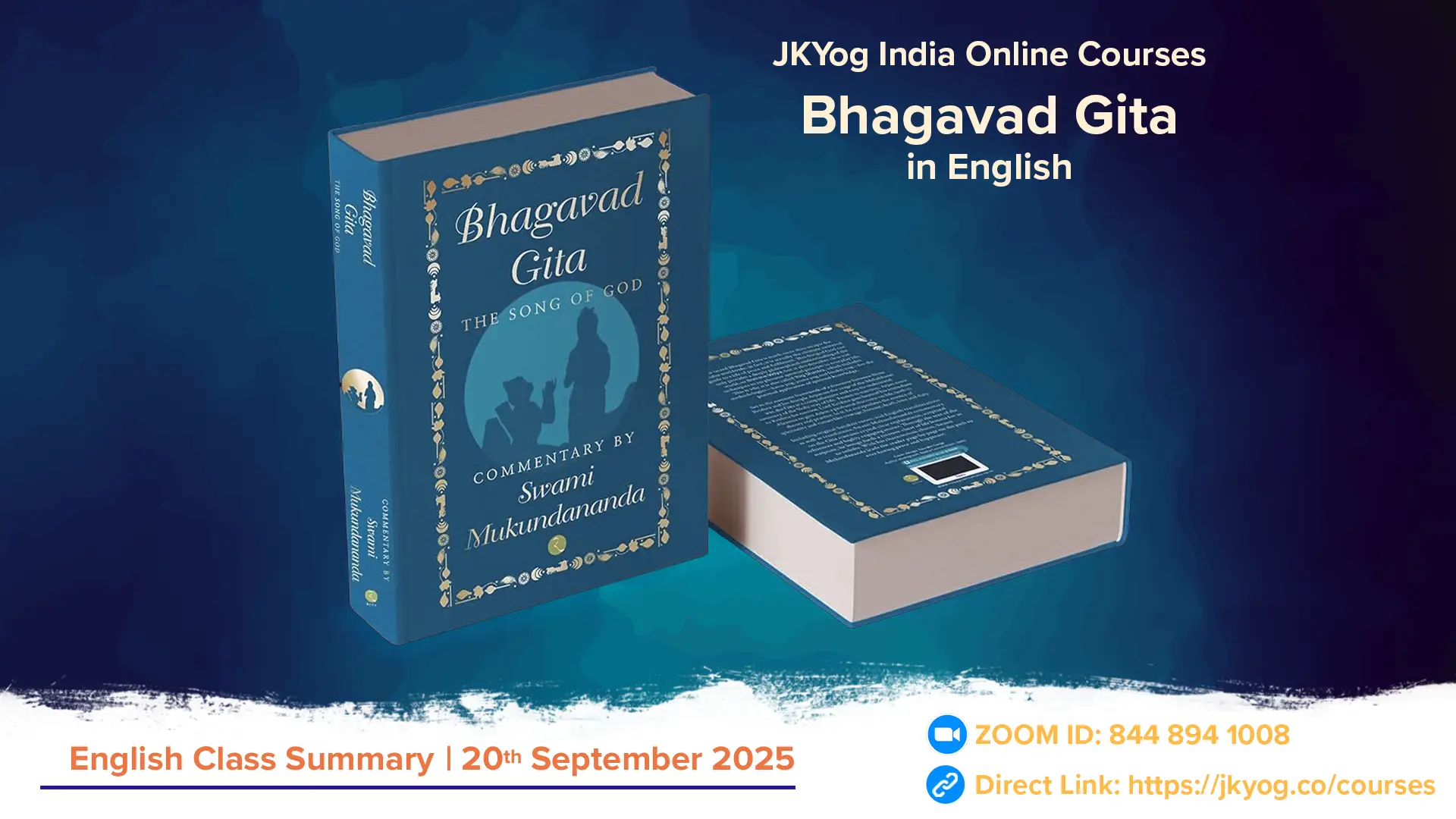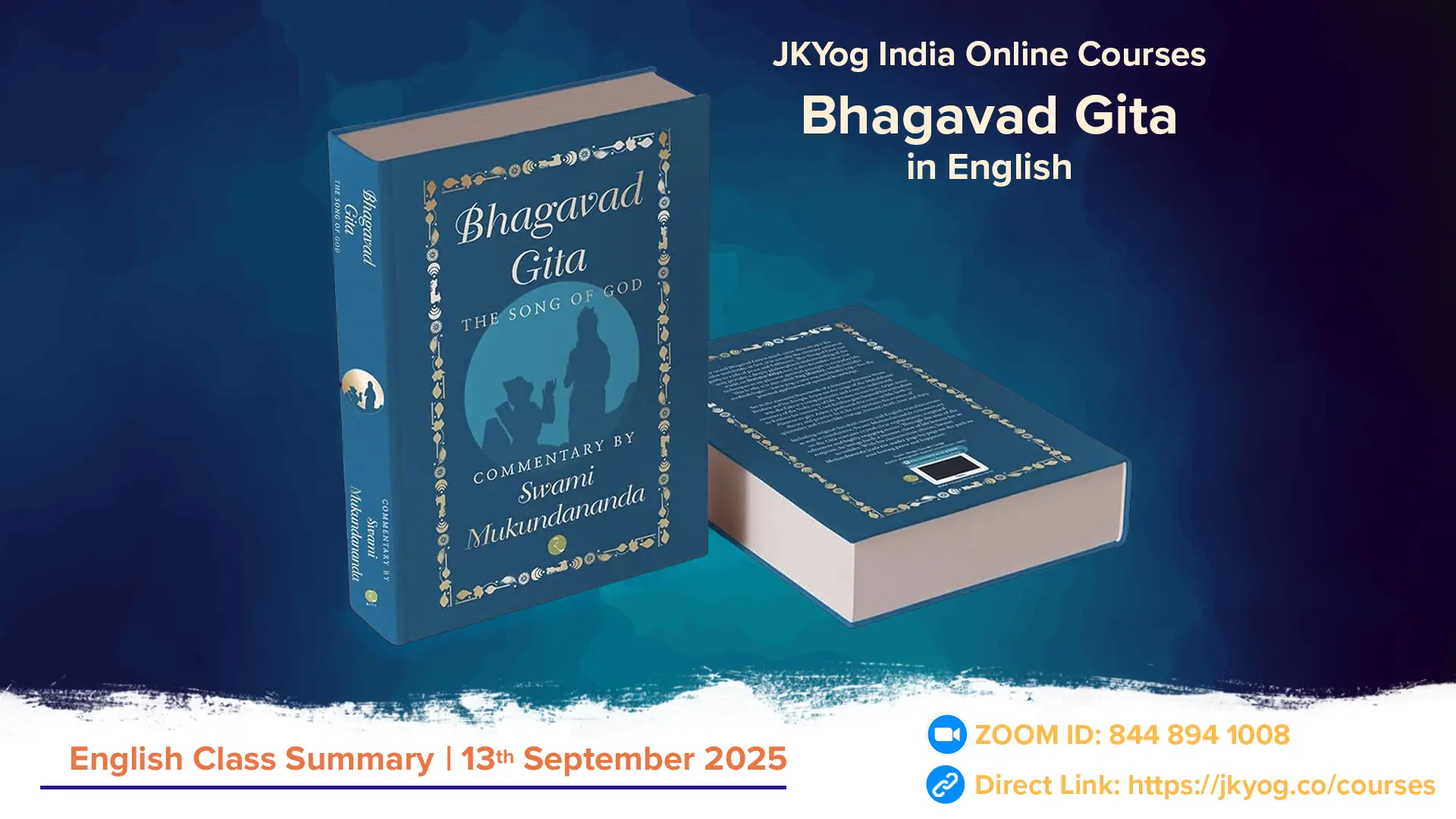Ved Vyas originally compiled the Bhagavad Gita as a separate text. Later, when he wrote the Mahabharat, he embedded it. The Bhagavad Gita, composed of 700 verses, is a separate text within the Mahabharata. It is considered a philosophical and spiritual dialogue between Prince Arjun and Shree Krishna, who serves as his charioteer and spiritual guide.
Placement in the Mahabharata: The Bhagavad Gita is placed within the Bhishma Parva (also known as the Book of Bhishma) of the Mahabharata. This parva (section) contains Chapters 25 to 42.
Structure and Content: The Bhagavad Gita consists of 18 chapters, spanning from Chapter 25 to Chapter 42 of the Bhishma Parva. Each Chapter addresses different aspects of life, duty (dharma), and spiritual realisation, culminating in profound philosophical insights and guidance on how to live a righteous life.
Significance and Names: The Bhagavad Gita is revered not only for its philosophical depth but also for its practical guidance in spirituality. It encapsulates the essence of Vedic knowledge and is sometimes referred to as "Gitopanishad," indicating its status as an Upanishad (a philosophical text that elaborates on the teachings of the Vedas) within the Mahabharata.
Additionally, the Bhagavad Gita is known as "Yog Shastra," emphasising its role as a scripture that teaches the practice of yoga (both physical and spiritual disciplines).
Meaning of Bhagavad Gita
"Bhagavad" means 'of God' or 'divine', and "Gita" means 'song'. Therefore, "Bhagavad Gita" literally translates to 'Song of God'. It is through this divine dialogue that Shree Krishna imparts profound wisdom and guidance to Arjun on the battlefield of Kurukshetra.
Gitopanishad:
The Bhagavad Gita is often referred to as "Gitopanishad". This term highlights its significance as a scripture that encapsulates the essence of Upanishadic teachings within the narrative of the Mahabharata. It is considered a concise summary of the spiritual teachings found in the Vedas.
Aspects of Knowledge in Bhagavad Gita:
The Bhagavad Gita imparts various types of knowledge:
- Atma Gyan: Knowledge of the self—understanding our true nature beyond the physical body and mind.
- Brahma Gyan: Knowledge of the Absolute—understanding the nature of God, His identity, attributes, and capabilities.
- Sambandh Gyan: Knowledge of relationships—understanding our relationship with the Supreme God, which is depicted as one of devotion, service, and love.
- Yog Shastra: The Bhagavad Gita provides theoretical knowledge and practical techniques for spiritual realisation and personal development. These techniques are collectively termed as "Yog". "Yog Shastra" signifies that the Bhagavad Gita is a scripture that instructs on the practice of various forms of yoga, including:
- Jnana Yog: The path of knowledge.
- Ashtang Yog: The eightfold path
- Bhakti Yoga: The path of devotion.
- Karma Yoga: The path of action.
Bhagavad Gita Application in Everyday Life:
One of the unique aspects of the Bhagavad Gita is its relevance to practical life. It not only elucidates lofty philosophical concepts but also provides clear-cut guidance on how to apply these teachings in everyday situations. This integration of theory and practice makes the Bhagavad Gita a comprehensive manual for spiritual living.
Arjun's Emotional Turmoil (Arjun Vishad Yog):
In Chapter- 1, Arjun experiences profound Despair and inner conflict on the battlefield of Kurukshetra. Arjun Vishad Yog explores why Arjun fell into profound Despair on the battlefield of Kurukshetra. This crisis becomes the catalyst for his spiritual elevation.
Material Attachment and Moral Dilemma:
Arjun's mind is overwhelmed by material attachments, particularly his concern for the well-being of his kinsmen and the consequences of engaging in battle. This moral dilemma plunges him into deep gloom.
Detachment and Surrender to God:
Shree Krishna exemplifies that those who surrender to God perform their duties selflessly, unaffected by the outcomes. They do not lament because they view all situations as manifestations of divine grace.
Foreseeing the Futility of Victory:
As Arjun contemplates the outcomes of war, he becomes increasingly worried and sad. He realises that even victory in battle would not bring him true and lasting happiness.
The culmination of Despair:
Arjun's despondency reaches its peak when he momentarily abandons his resolve to fulfil his righteous duty (dharmic duty) as a warrior.
Eternal Nature of the Self:
Shree Krishna initiates his teachings by explaining that the true essence of a person, often referred to as the 'self', is the eternal soul and not the perishable material body. This soul shares in the eternal nature of God Himself.
Role of the Soul in Consciousness:
The soul possesses consciousness and imbues the body with this quality by residing within it. This dualistic nature—sentient soul and insentient body—defines the fundamental distinction between the eternal and the temporary in human existence.
Cycle of Life and Reincarnation:
Throughout a single lifetime, the body undergoes continuous transformation from childhood through youth to maturity and old age. Similarly, at the end of life, the soul transitions to another body, illustrating the impermanent nature of physical forms and the soul's eternal journey.
Summary: JKYog India Online Class- Bhagavad Gita [English]- 13.07.2024




